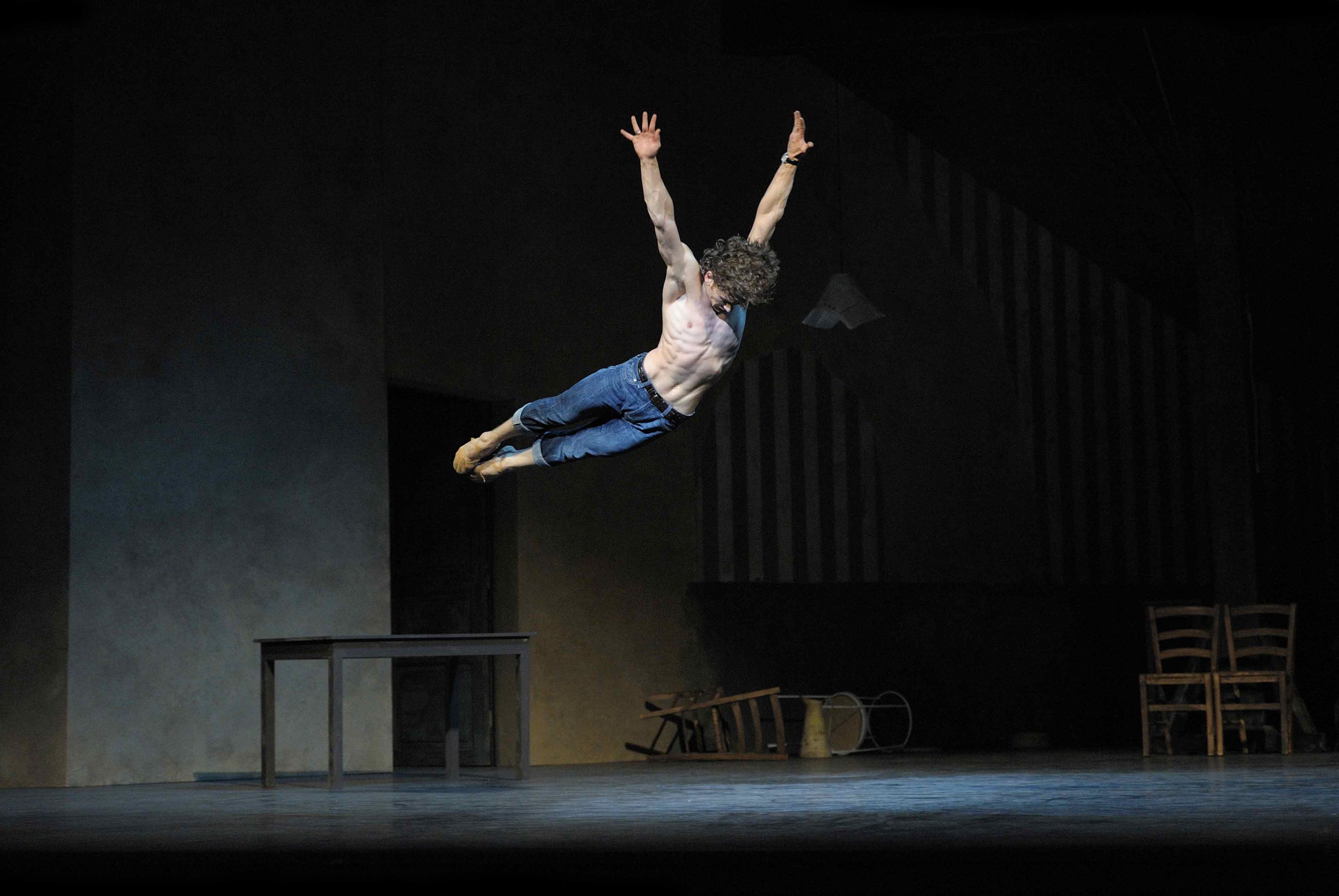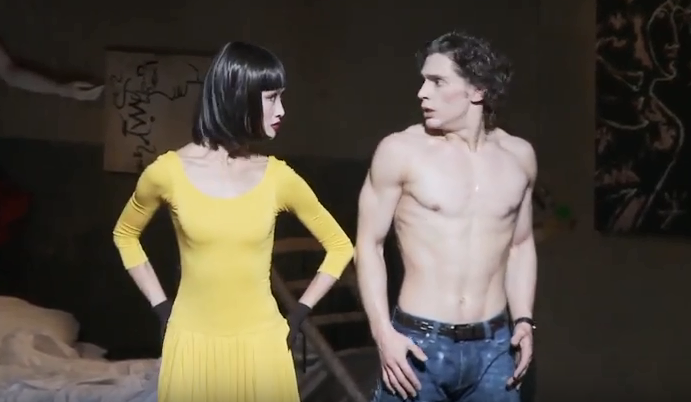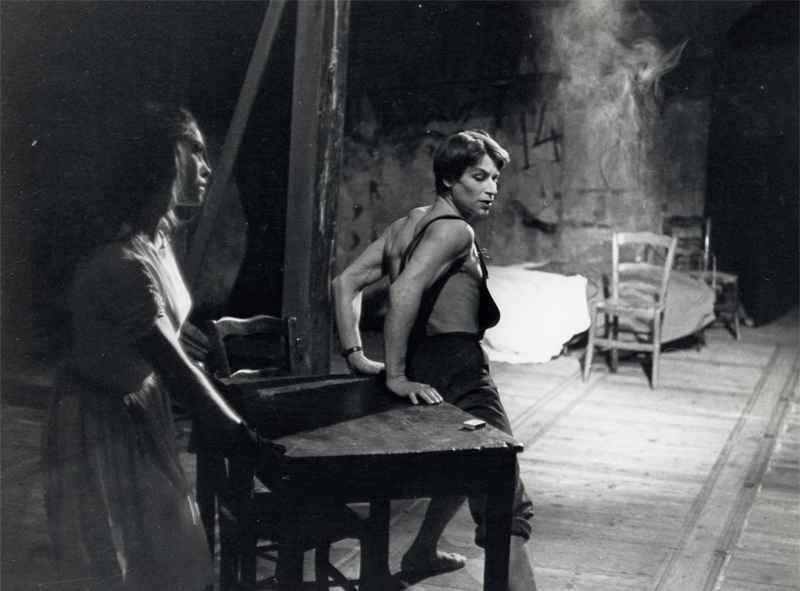
Five things about Le Jeune Homme et la Mort

1) Its creator, Jean Cocteau, had a previous history of pushing balletic conventions.
The French writer, designer, thinker, director Jean Cocteau originated several ballets in his lifetime, writing the libretto or original idea for Nijinska’s Le Train Bleu and Massine’s Parade, amongst others.
He always aimed to break the mould. With Parade, he made Cubism clash with ballet (Picasso created the costumes), and brought in the grotesque in Les Mariés de la Tour Eiffel (where, amongst many other happenings, a lion devours a wedding guest).
For Le Jeune Homme et la Mort, as well as writing the story, Cocteau helped create the designs and had a say in the choreography. He wanted to “heighten everyday gestures, up to the point where they become dance (…) People were used to Petipa steps… and suddenly they see gestures from everyday life, very exaggerated”.
Choreographer Roland Petit ran with the idea, including the lighting of a cigarette and the checking of one’s watch into his steps.
2) The music was only selected after the choreography was created.
Jean Cocteau suggested to choreographer Roland Petit that he should create the steps using music that would inspire him the most: “we will choose the definitive music when the ballet is finished”.
According to his autobiography, Petit worked with improvised jazz music. Once the choreography was finished, it came to about 18 minutes: Cocteau asked the orchestra conductor they were working with, André Girard, what he thought would work best. Mozart, Beethoven were put forward, and finally Bach’s Passacaglia was selected, just before the premiere.
The choice proved to be the right one. Dancer Jean Babilée, the original Jeune Homme, said the music really brought out a lot of emotion in him, and he couldn’t believe how well it matched the steps.

3) The original set was a hand-me-down from a film
Cocteau wanted Paris as a décor. The theatre producer, one year on from the end of WWII, was strapped for cash. Set designer Georges Wakhévitch found a solution: he would bring the set from a movie he was working on, Martin Roumagnac (which starred Marlene Dietrich and Jean Gabin), as filming was wrapping up a few days before the opening.
The final reveal of the Paris skyline – the rooftops, the lit-up Eiffel Tower – is one of ballet’s most impressive coups de théâtre.
4) It was the first ballet in France to have its copyright disputed.
Ten years after its creation, Jean Babilée decided to revive the work as part of a ballet season at the Olympia theatre. The ballet makers agreed.
However, the ballet’s producer Roger Eudes, owner of Ballets des Champs Elysées where it was first premiered, decided to sue him, arguing that he “owned” the choreography, set and costumes since he had paid for them in 1946. This was a first for ballet.
Who was the ballet’s true author? Estimating that Eudes had not provided enough evidence to prove his participation in the actual creation of the work, French courts decided that it was Roland Petit and Jean Cocteau.
5) Over fifty years after its premiere, audience members still remembered the impact it had on them.
In 1998, choreographer Olga de Soto placed classified ads in the French newspapers Le Figaro and Le Monde, looking for audience members who had attended the original run. Eight people answered, and she interviewed them for her piece Histoire(s).
While one of the interviewees remembered dancer Nathalie Philippart’s “unforgettable entrance” (“the door slams open and she enters, on pointe, with her arms raised, like someone who is going to just take you!”), another said: “For me, the choreography, it’s only Jean Babilée dancing. I don’t remember seeing Nathalie Philippart dancing”.
A lady found it “an immense moral shock for me, immense. It raised lots of questions… with my husband we talked about this performance for a long time, about this dancer [Babilée], which we never forgot.”